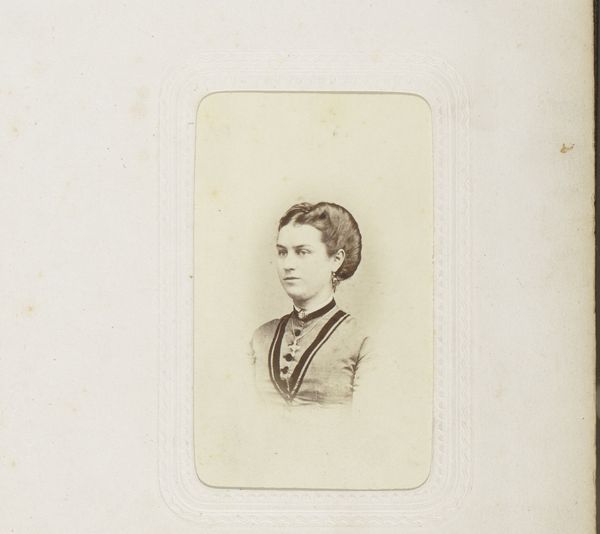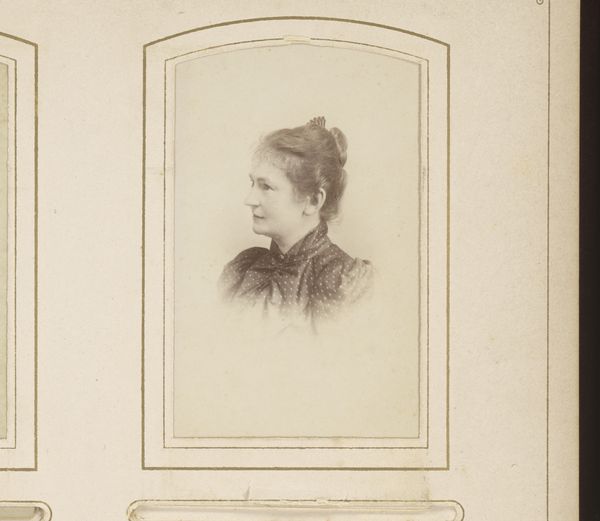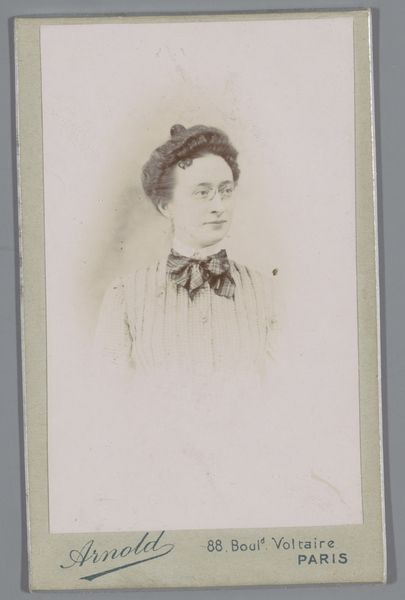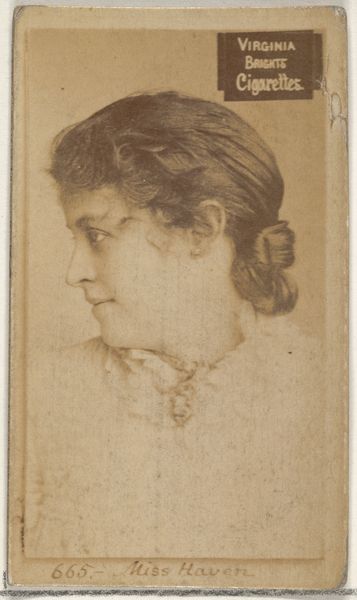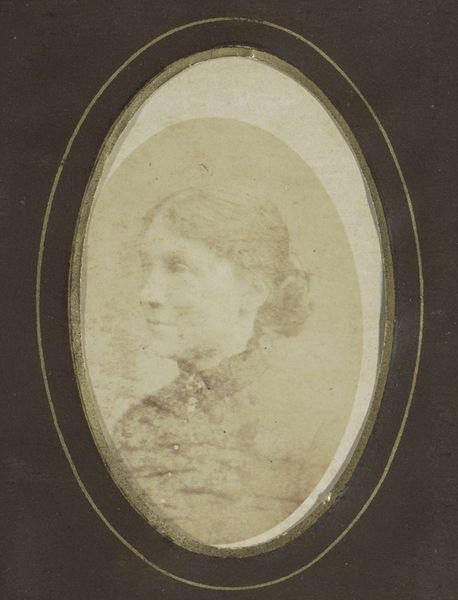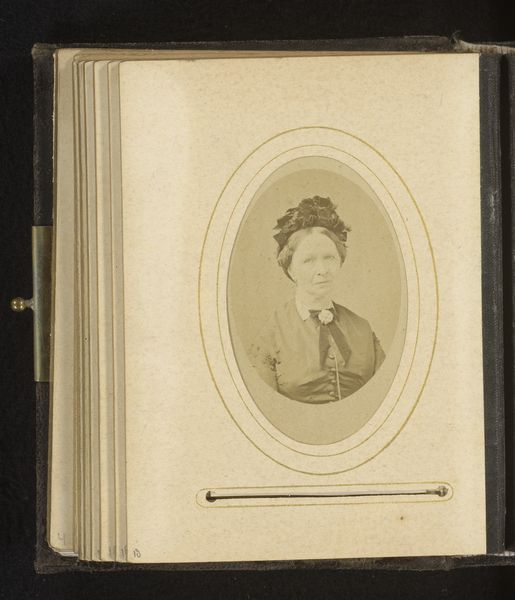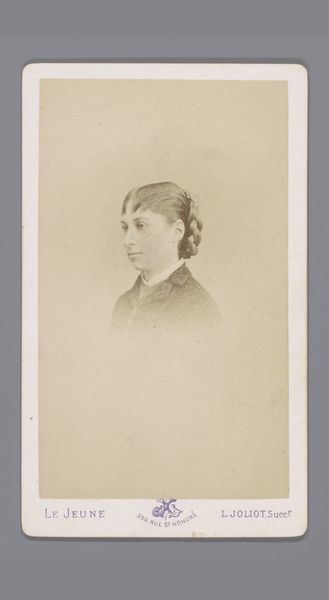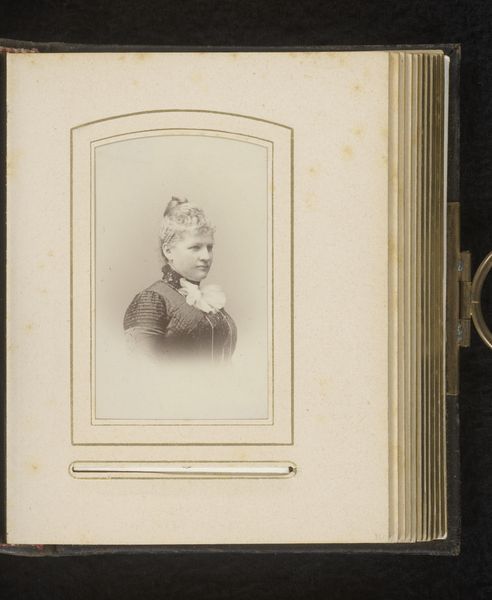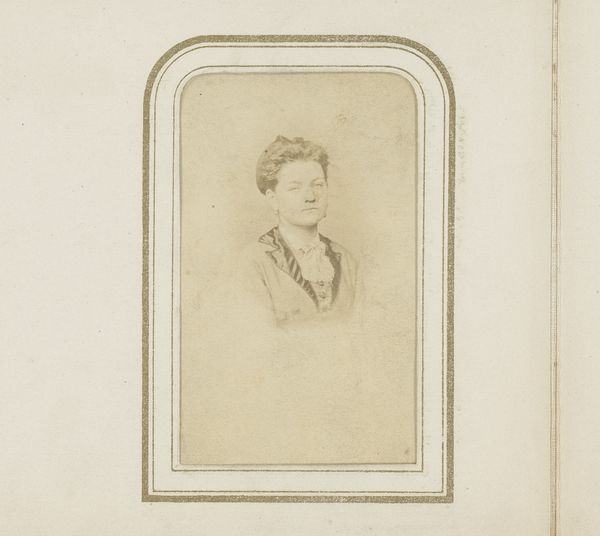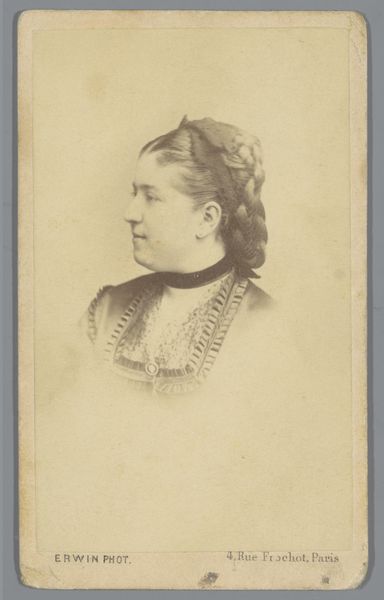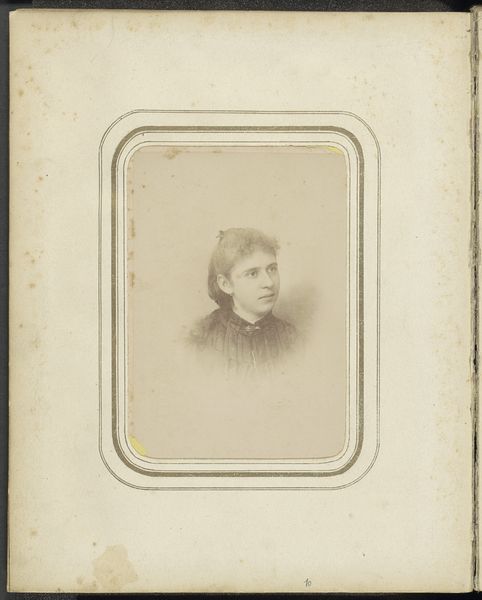
drawing, pencil
#
portrait
#
drawing
#
coloured pencil
#
pencil
#
pencil art
#
realism
Copyright: Rijks Museum: Open Domain
Curator: Here we have Jan Veth's "Portret van een vrouw, de kin rustend tegen de linkerhand," or "Portrait of a Woman, Chin Resting on Her Left Hand" created sometime between 1874 and 1925. It’s a striking pencil and coloured pencil drawing. Editor: Yes, striking is the word. There’s a weariness in her gaze, an almost resigned posture, resting her chin that way. It projects a profound sense of melancholy. Curator: Indeed. Veth was renowned for his portraits, particularly his ability to capture the sitter's psychological state through careful observation and skilled rendering. Notice how he uses the pencils to build up the textures, not just in the clothing, but particularly in the face, to give volume and form. It’s fascinating how such a simple medium can convey such depth. Editor: The dress, though sketch-like, does appear utilitarian, and I would argue it subtly speaks to the social realities of women in that era. What roles were women of this apparent class allowed to occupy in society? The piece really encourages questions of societal pressures, doesn’t it? Is she a mother, a wife, perhaps a widow carrying grief? Curator: Absolutely. Veth's technique here is also key. His realistic style doesn't just depict an image; it gives the viewer access to a perceived interiority. Consider also how the materiality of pencil and paper are, themselves, so accessible. Anyone could potentially produce such a work, and it raises the question of what truly constitutes “high” art versus mere craft. Editor: It challenges the viewer, too. There is very little in the work, materially, to distract the eye from engaging with her humanity, her essence. I find that profoundly affecting, especially given the time period in which it was created. Were women of her station "meant" to have an essence at all? Did the patriarchy allow that to even be a concept? Curator: And that brings us full circle to how the material construction directly affects the portrait's broader significance. It prompts vital conversations. Editor: Precisely, seeing this woman now through our contemporary lens creates a powerful dialogue across the decades, inviting considerations about how societal frameworks influence our very being.
Comments
No comments
Be the first to comment and join the conversation on the ultimate creative platform.
